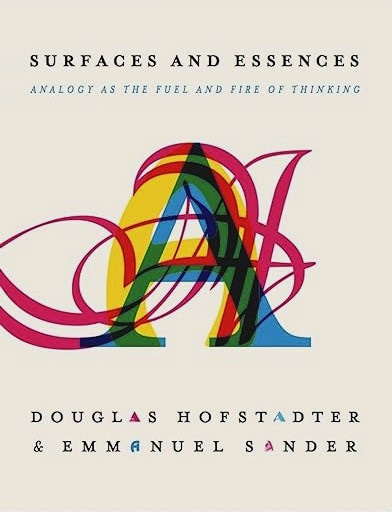From a Vast Ocean of Analogies to Patterns of Thought
The Subconscious and Conscious forms of Analogies
Zettelkastens can draw on two types of sources for new notes: external and internal. Internal sources include fleeting ideas and existing notes in the Zettelkasten itself. In a way, a Zettelkasten can suggest what the next note, or Folgezettel, should be.
The current post is an example of a Folgezettel of some past posts in the blog extendedbrain.substack.com.
Some time ago, I wrote about The Three Pillars of Reasoning, Parts I, II, and III, which was about deduction, induction, and abduction.
A natural question arising from this is, why analogical thinking was not mentioned.
In the last post, Connecting Ideas in PKM Systems: A Messy but Rewarding Journey, the example of connecting ideas was about indwelling and Poincaré's process of creativity, which is none other than an analogy.
So the current post about Analogy can be considered as settling my debt to write about Analogy.
Different philosophers have held various views on analogical reasoning.
C.S. Peirce didn’t include analogical reasoning with the deduction, induction, and abduction, because he thought analogical reasoning is a combination of deduction and induction.
Gottfried Wilhelm Leibniz viewed analogy as a valuable tool for making connections between seemingly disparate concepts or situations. He believed that reasoning involves using available evidence and information to draw conclusions about the nature of reality, and that analogy could help us see patterns and relationships that might otherwise go unnoticed. An example of his extensive use of analogy is his theory of Monads, which posits that the universe is made up of infinitesimally small, indivisible units called monads.
John Stuart Mill argued that analogy is a powerful tool for discovery, and that it is essential for scientific progress. He saw analogy as a useful tool for making predictions about future events or outcomes based on past experiences.
However, what has drawn my attention to analogical reasoning for some time was the book, “Surfaces And Essences: Analogy As The Fuel And Fire Of Thinking” by Douglas R. Hofstadter and Emmanuel Sander:
Hofstadter believes that analogy is much more pervasive than we might think. It is not just something we do occasionally, but rather a fundamental process that underlies all thought and perception. Analogies underlie all of our categorizations, and as we constantly form new analogies, our categories become more fluid. We are constantly encountering new situations that don't fit neatly into any of our existing categories. When this happens, we spontaneously create new context-specific categories on the fly, without even giving them a name.
One example from the book is the following:
Seeing an old friend intently focused on something insignificant in a beautiful location can bring to mind a past situation with a similar underlying structure, such as a young child captivated by ants on the ground while oblivious to the grandeur of the Grand Canyon. The two situations may seem superficially different, but they share a deeper skeletal structure that allows one to evoke the other.
This example shows an analogy between two different situations, one seen and the other remembered. The connection is made through abstraction, which captures the underlying structure of the two situations while ignoring their differences.
Another example is how we can often guess the general plot of a movie, even though there can be many different variations. These include Jekyll and Hyde dual personality, Cinderella rags to riches, treasure finding journey. The template is result of the abstraction process.
Most analogies are subconscious, lying in ”a vast sea of invisible analogies" a term which I have borrowed for the title of this post. The sheer number of the analogies would be overwhelming if we were consciously aware of all of them. Interestingly, analogies can emerge from the subconscious to be applied to a situation, and then return back to the subconscious.
Subconscious analogical thinking allows us to quickly interpret new situations by drawing parallels to our past categorical knowledge. This type of thinking is part of Daniel Kahneman's System I thinking. This fluid, intuitive abstraction underlies our imagination, creativity, and adaptability in navigating new contexts.
Conscious analogical reasoning is just as important as subconscious analogical reasoning. Newton's analogy of an apple falling from a tree and Einstein's analogy of a train moving in space may have been subconscious at first, but once they were communicated and shared, they became conscious.
In communication, we often use analogies to explain complex concepts to others, to make our arguments more persuasive, and to come up with new ideas.
Abstractions from analogies result in patterns of thought, or mental models, which can be considered compressed ideas suitable for transmission.
In summary, analogical reasoning is pervasive, taking both subconscious and conscious forms. It is often combined with other forms of reasoning, including deduction, induction and abduction. It leads to abstract patterns of thought and mental models.






